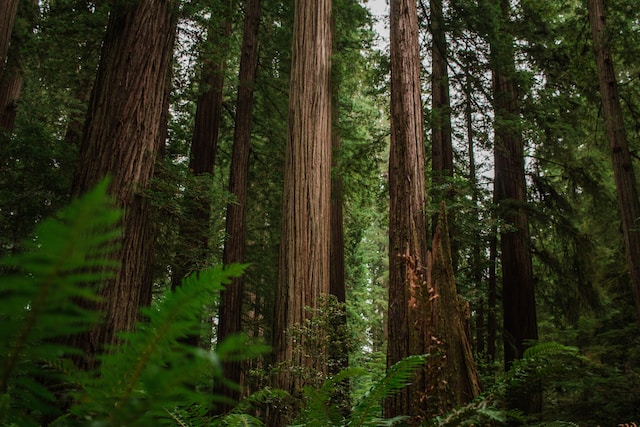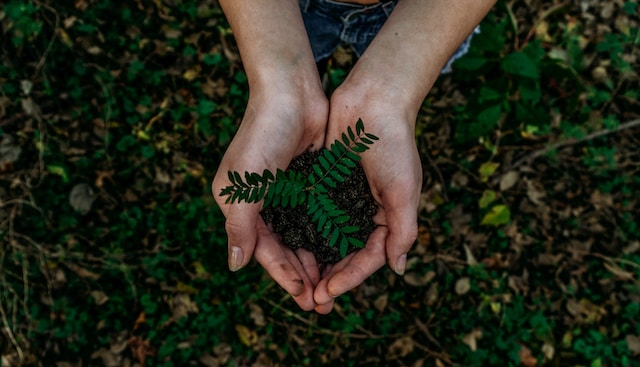There was something missing in the unmistakable signs of autumn as the sun beat down last October. The sweet scent of leaves decomposing on the ground was prominent as usual, but the air felt warm on the nostrils. People were outside in shorts. Where was the cold, damp air that hinted of impending snowfall? Where were the whitecapped mountain peaks signaling the approach of ski season? Why were neighbours complaining about still having to water their garden this late in the year?
With this unusually dry fall weather, British Columbia was experiencing severe drought only a year after torrential rains and epic flooding devastated farms and highway infrastructure. Ten regions were at the highest Drought Response Level: 5, including parts of Vancouver Island, the Peace region, and the Lower Mainland.
Farmers in B.C. were seeing their harvests threatened by the lack of rain and dwindling water supplies. Dangerously low watersheds resulted in salmon die-off and hydro dams curtailing output to slow the depletion of their already low reservoirs. Over 200 wildfires were burning in B.C. as of October 24, with the total surpassing 1,700 fires for the current fire season.
In an environment untouched by humans, the heavy rains in 2021 should’ve recharged the aquifers and made British Columbia more drought-resilient the following year. Sadly, for decades we’ve mismanaged the various ecological components that regulate the water cycle in the province. What we are now witnessing is the destabilizing response of multiple complex and interconnected systems that are being pushed to the breaking point.
The crucible of life
The more frequent and worsening climate catastrophes may seem manageable to those who haven’t been directly impacted, but in geological terms things are changing at an unprecedented pace. Species are disappearing at a rate that hasn’t been seen since the last great extinction event, around 65 million years ago. The water cycle is central to the story of B.C.’s environmental collapse.
Walter Jehne, a soil microbiologist from Australia who has been tirelessly spreading his message around the world, believes that if we don’t start to care for our soils, ecosystems, and the hydrological cycle that they support, then our civilization will be cactus. While water sustains living organisms, soil is the foundation. Jehne describes soil as “the crucible of life.” Hundreds of millions of years ago, land on Earth was only rock. Microbes spread from the ocean, broke down the rock, began forming soil, and eventually plants emerged. The soil stored life-giving water for the plants and slowly ecosystems emerged to green the barren terrestrial surface.

Imagine a thriving old-growth rainforest on Vancouver Island, verdant and dripping with moisture. After the rains, the tree canopy catches water and slows its downward descent. Once on the ground, a deep soil sponge absorbs the rainwater and stores it for longer periods of time. Water slowly makes its way down into underground aquifers far beneath the surface for even longer-term storage. This system adapts seamlessly to seasonal fluctuations, with the water table rising during the rainy season and lowering during periods of drought as it supplies the vegetation above.
The roots of trees, shrubs, and other groundcover draw water from the soil sponge and plants release some of this moisture into the atmosphere through transpiration. During hot, sunny weather, evaporation can also occur; but even on the hottest days, the forest floor temperatures rarely exceed 20°C, whereas soil exposed to direct sunlight could reach 50-to-60°C. Plants and soil form a system that regulates the flow of water into the ground as well as the flow of water back into the atmosphere— an ecological system that has evolved over millions of years. When an old growth forest is clearcut, the soil can no longer benefit from this relationship and will quickly degrade as it is baked by the sun and eroded by rainfall.
In B.C., around 200,000 hectares of forest is harvested every year. Since the turn of the millennia, we’ve lost over four million hectares of mostly primary forest and the tree farms that replaced them are just beginning to mature. It can take 60 years or more to establish a tall stand of trees, and the young seedlings in a tree plantation don’t have the root systems or biomass to provide the shade, transpiration, and healthy soil sponge required to adequately regulate the hydrological cycle, resulting in a landscape that is far less able to absorb rainfall. Instead, the water runs off, causing swollen streams and flooding at lower elevations. The runoff washes away soil and fills creeks with muddy water, swelling rivers and ultimately flushes into the ocean, instead of slowly percolating into underground aquifers.
Is it any wonder then that the atmospheric river of 2021 caused massive flooding and erosion across the heavily logged regions of B.C.? Without the ecosystems that regulate water flow, there is no capacity to handle rainfall on that scale. This outcome is completely aligned with Jehne’s warnings about destabilizing the hydrological cycle by compromising the soil sponge.
Last fall’s severe drought conditions shouldn’t have been a surprise. Climate science has warned us that drought is one of the many consequences of deforestation. Replacing the protective tree canopy of old growth forests with an exposed surface of clear cuts and immature tree farms also contributes to the warming and drying effect. Greenhouse gases trap the heat, but greater heat reflecting from the surface of the planet amplifies the amount of heat being trapped.
As the atmosphere warms, it actually retains more water that would otherwise be on the surface. Jehne explains that a forest helps draw that moisture back down to earth. For condensation and rain to occur, the water vapour in the atmosphere must attach to a solid in order to form water droplets. These solids include dust, pollen, or hydroscopic bacteria released by plants. Jehne asserts that hydroscopic bacteria released by trees and other vegetation drives over half of the precipitation in a rainforest.
An old-growth rain forest is truly a self-sustaining system. When a region of primary forest is replaced with a uniform crop of seedlings, this will impact the amount of rainfall in the area. Establishing a resilient hydrological cycle requires many subcomponents such as soil, wetlands, and a diverse variety of trees, shrubs, and groundcover. Even the fungi, insects, and animals in an ecosystem have a role to play in maintaining an equilibrium that enables all components of the overall system to thrive.
Sustainable solutions
Jehne’s solution is quite simple. First, we have to stop the destruction of forests and degradation of the soil sponge on agricultural land. Second, we must work with great urgency to restore the soils in areas that have been damaged by pests, wildfires, and the pursuit of economic growth. In many cases, wild ecosystems will recover naturally and just need to be left alone. Regenerative farming is a solution for restoring soil devastated by pesticides, fertilizers, and heavy tilling.
Jehne predicts that California’s Central Valley is within ten years of desertification. This is a dire outcome for a region that produces 40 per cent of the food supply for the United States. Despite efforts to decarbonize, fires consume huge tracts of the state’s forest every summer and their aquifers are being drained to dangerous levels. The regeneration of agricultural soil and restoration of forests damaged by wildfires and logging has to be an emergency-scale effort.
There are proven techniques for restoring agricultural soil and accelerating forest recovery. For example, the forestation method developed by Japanese botanist Akira Miyawaki is known to regenerate forests 10 times faster than current tree planting methods. We have all the solutions we need, with more being developed every year.
We just need to get to work.
If the water cycle is the blood flowing in our planetary life support system, then it’s time for humanity to stop consuming the metaphorical sugar and processed foods that compromise our planet’s circulatory system. We need to be put on a resource consumption diet and start exercising restoration projects rigorously. It is our choice as a society. Inaction risks an outcome that is equivalent to humanity lying in a palliative care ward wishing they’d listened to the doctor’s warnings.
Rob Miller is a retired systems engineer who now volunteers with the Calgary Climate Hub and writes on behalf of Eco- Elders for Climate Action.









